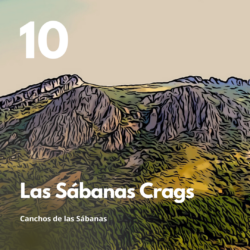ATTRACTIONS OF THE VISIT
From the access road to Berzocana there is a panoramic view of this geomorphological monument, where it is possible to observe the geological aspects described above, and from its summits we can see the extensive Trujillo peneplain, dominated by greywackes, shales and matrix-supported conglomerates of the Domo Extremeño group, where the villages of Berzocana, Solana, Garciaz and Aldeacentenera are located.
In the quartz-arenites we can find fossil traces of different marine invertebrates from the Ordovician period (Cruziana, Skolithos, Daedalus); We can also contemplate the great thickness of the Lower Ordovician “Alternancias con Skolithos”, and the black shales of the Ediacaran (Ibor Group) with good examples of algal filaments and metazoans (vendotaenids and sabelliditids),. The contact between this unit and the Skolithos series is only visible in very specific places. These are fossils of soft-bodied organisms (interpreted as algae and metazoans respectively), preserved as compressions in which only carbon films are visible. The shales of the Ibor Group are very easily weathered and are generally covered by debris or soils.
In addition, under the quartzite overhangs on the slopes of this mountain range are the Los Cabritos cave and the rocky shelter of El Risquillo de Paulino, with schematic cave paintings, whose anthropomorphic and zoomorphic motifs, dating from the Chalcolithic period, are archaeologically very interesting, and are therefore conveniently protected by a fence. See the route to the cave paintings of Berzocana.
We can also visit a curious “pedra caballera” (balancing rock) of quartzite nature, known as the Cabeza del Moro (the head of the Moor), as well as the nearby Municipal Botanical Garden, located on the grounds of the so-called “Alternancias con Skolithos”, a series underlying the Armorican Quartzite, rich in Skolithos trace fossils.
In Berzocana, a visit to the impressive parish church of San Juan Bautista, declared a Historic Monument of National Interest in 1977, is a must. According to an ancient tradition, the bones of San Fulgencio and Santa Florentina, brothers of San Leandro and San Isidoro de Sevilla, are kept there. We can also see the Geopark’s Regional Archaeological Interpretation Centre, where there is a replica of the famous Berzocana Treasure (8th century BC) and other archaeological pieces.



